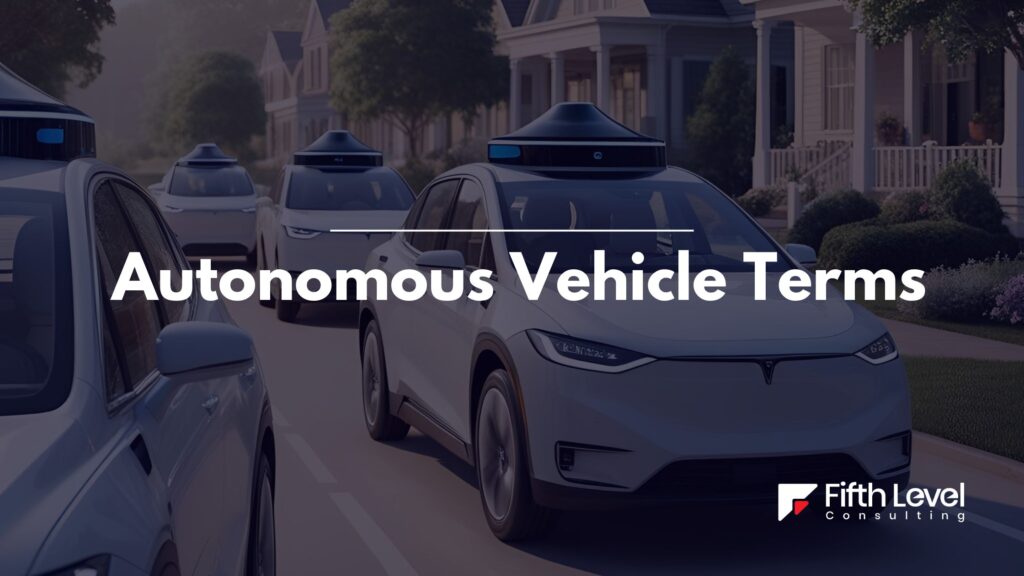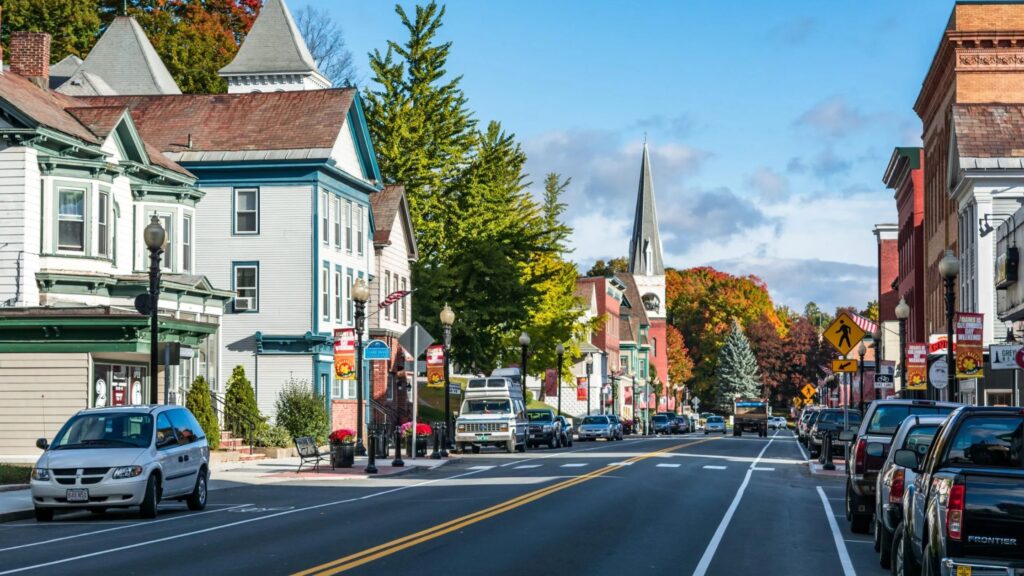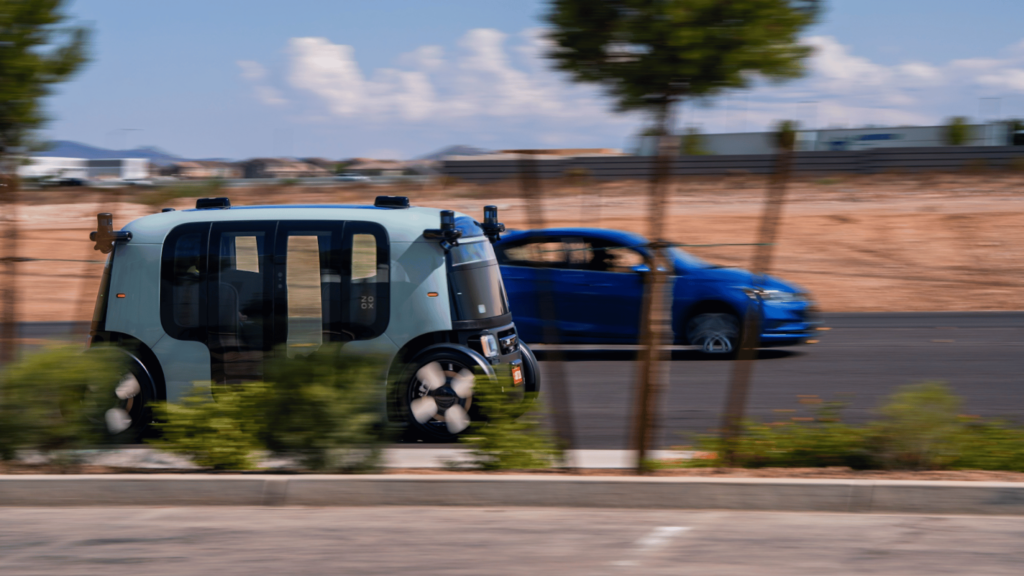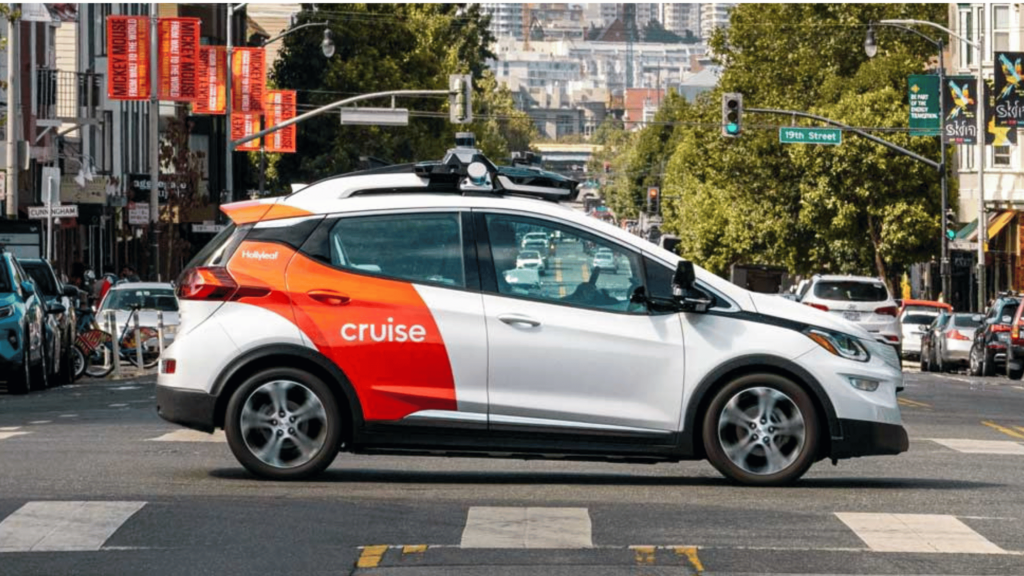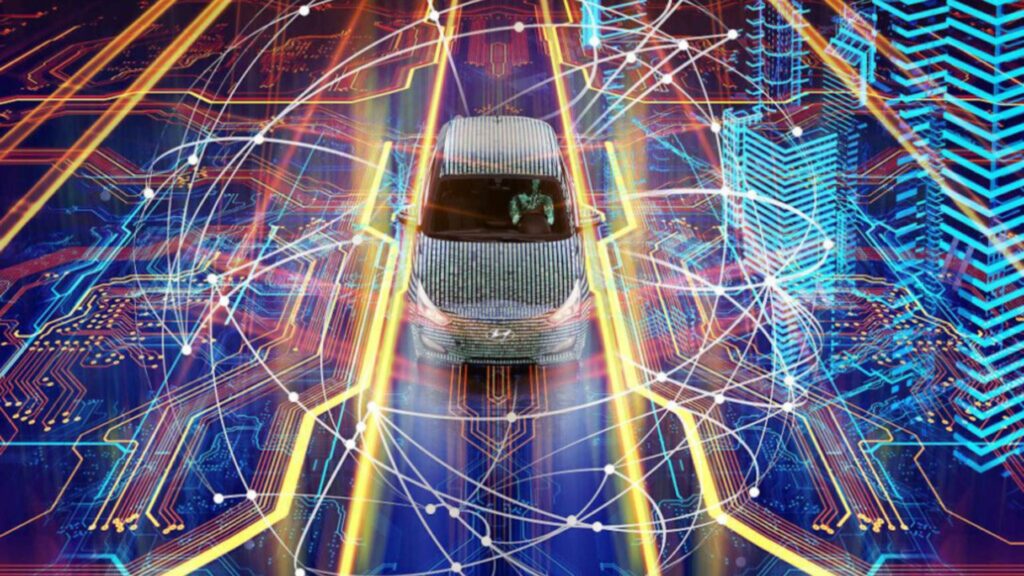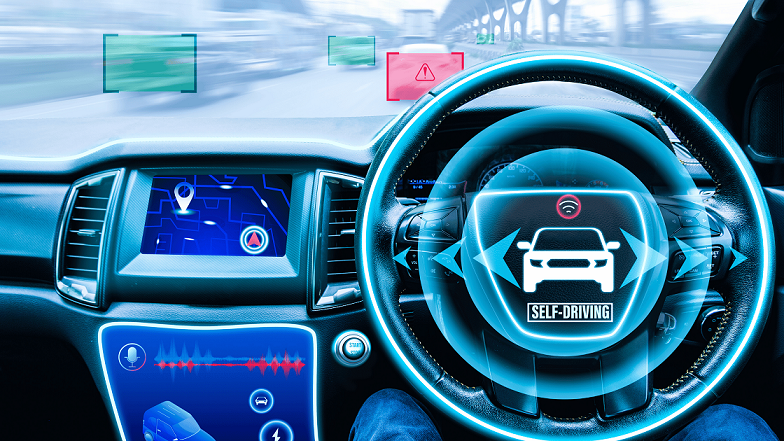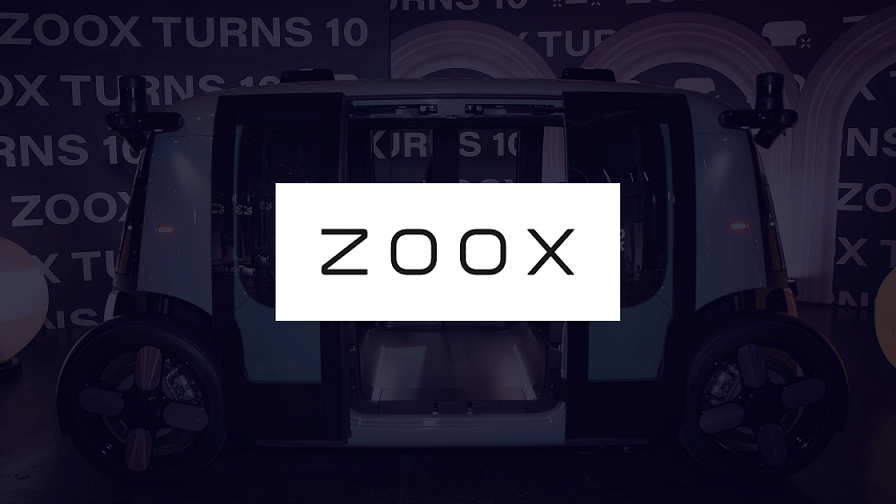The autonomous vehicle industry is no longer a distant dream—it’s a fast-moving, disruptive force shaping the future of mobility. From smart cities and intelligent transportation systems to electric fleets and robotaxis, the language that drives this innovation is just as critical as the technology itself. To communicate effectively in this space, you need to understand the core autonomous vehicle terms shaping the conversation.
This glossary has been created as your definitive guide to the 100 most important autonomous vehicle terms used across engineering, artificial intelligence, robotics, transportation policy, and vehicle manufacturing. Each term is thoughtfully defined to reflect real-world use cases within the AV ecosystem.
Glossary of 100 Autonomous Vehicle Terms
1. ADAS (Advanced Driver Assistance Systems)
Electronic systems that assist drivers in driving and parking functions, providing features like lane-keeping, adaptive cruise control, and automatic braking.
2. Algorithm
A set of instructions or rules processed by a computer to solve problems — critical for decision-making in AVs.
3. Artificial Intelligence (AI)
Machine intelligence that enables AVs to perceive environments, learn patterns, and make complex decisions without human input.
4. Autonomy Levels (SAE Levels 0-5)
A classification defined by SAE International to describe the extent of automation — from Level 0 (no automation) to Level 5 (full automation).
5. AV Stack
The collection of software and hardware layers — perception, planning, control, etc. — that power autonomous vehicle operation.
6. Behavior Prediction
The estimation of other road users’ future actions based on current observations, essential for safe AV navigation.
7. CAN Bus (Controller Area Network)
A robust vehicle bus standard that enables communication among various microcontrollers and devices within a vehicle.
8. Camera-Based Perception
Using visual sensors to interpret and understand surroundings, identifying lanes, signs, and obstacles.
9. Chauffeur Mode
An AV mode where the vehicle takes full responsibility for driving without human involvement within specific conditions.
10. Connected Vehicle
A vehicle capable of communicating with other vehicles (V2V), infrastructure (V2I), and networks (V2N) to enhance safety and efficiency.
11. Control Module
Computes and executes commands related to steering, braking, and acceleration.
12. Data Fusion
Combining inputs from multiple sensors (e.g., LiDAR, radar, cameras) to create a comprehensive environment model.
13. Deep Learning
A subset of machine learning involving neural networks with many layers, enabling AVs to recognize objects and patterns.
14. Drive-by-Wire
Replacing traditional mechanical vehicle controls (e.g., steering, braking) with electronic systems.
15. Dynamic Object Tracking
The process of continuously monitoring moving objects such as pedestrians, cyclists, and other vehicles.
16. Edge Case
Rare or unexpected situations that challenge the decision-making capabilities of autonomous systems.
17. End-to-End Learning
Training an AV model directly from sensor input to control output without manually designed intermediate steps.
18. Environmental Modeling
Building a virtual model of the vehicle’s surroundings to assist in navigation and decision-making.
19. Fail-Operational System
A system that continues to operate safely even after one or more components fail.
20. Fallback Mode
A safety mechanism that shifts control to the human driver or a minimal-risk condition if the AV system fails.
21. Geofencing
Creating virtual boundaries within which an AV is allowed to operate.
22. Global Positioning System (GPS)
Satellite-based navigation that provides geolocation data essential for autonomous operations.
23. Ground Truth Data
Accurate data collected manually or with highly reliable systems used for training and validating AV models.
24. HMI (Human-Machine Interface)
The user interface that enables interaction between humans and autonomous vehicles.
25. HD Maps (High-Definition Maps)
Highly detailed, centimeter-level accurate maps essential for precise AV navigation.
26. Hybrid Sensor Fusion
Combining probabilistic and deterministic methods to merge data from different sensors.
27. IMU (Inertial Measurement Unit)
A device measuring vehicle acceleration, orientation, and angular velocity.
28. Infrastructure-to-Vehicle Communication (I2V)
Exchanging information between road infrastructure (traffic lights, signs) and vehicles.
29. Intervention
When a human operator manually overrides the autonomous system.
30. Lane Detection
Identifying lane markings on roads to guide AV steering.
31. LiDAR (Light Detection and Ranging)
A remote sensing method that uses lasers to create high-resolution 3D maps of surroundings.
32. Localization
The process of determining the precise position of the AV within its environment.
33. Machine Learning (ML)
Algorithms that allow systems to learn from data and improve performance over time.
34. Mapping
Creating digital representations of the environment to aid in navigation.
35. Marginal Cases
Scenarios close to decision boundaries that are difficult for machine learning models to classify.
36. Motion Planning
Determining the optimal path and maneuvers to reach a destination safely.
37. Neural Network
A computational model inspired by the human brain, used extensively in AV perception tasks.
38. OTA Updates (Over-the-Air Updates)
Remote updates of vehicle software to add features or fix issues.
39. Obstacle Avoidance
The ability to detect and steer clear of obstacles without human input.
40. Operational Design Domain (ODD)
The specific conditions under which an AV is designed to operate (weather, roads, speeds).
41. Path Planning
Strategizing a collision-free, smooth, and efficient path from one point to another.
42. Pedestrian Detection
Identifying and tracking human beings in the vehicle’s vicinity.
43. Perception Stack
The collection of software modules that interpret sensor data into actionable insights.
44. Platooning
Vehicles traveling in close proximity in a coordinated manner, reducing drag and improving efficiency.
45. Point Cloud
A collection of data points from 3D space, typically produced by LiDAR sensors.
46. Predictive Modeling
Using historical and real-time data to forecast future behavior of other road users.
47. Redundancy
Duplicate systems or processes that ensure continued operation in the event of a failure.
48. Remote Assistance
Support provided by human operators who can guide AVs when encountering complex situations.
49. Ride-Hailing AV
Autonomous vehicles used in services like robotaxis where users request rides via apps.
50. Road Edge Detection
Identifying boundaries of roads even in absence of lane markings.
51. Robotaxi
An autonomous taxi service operating without a human driver.
52. Sensor Suite
The complete set of sensors onboard an AV, including LiDAR, radar, cameras, and ultrasonic sensors.
53. Sensor Fusion
Integrating data from multiple sensors for improved perception accuracy.
54. Shadow Mode
Running an AV system in passive mode to collect data without controlling the vehicle.
55. Simultaneous Localization and Mapping (SLAM)
Technique for mapping an environment while tracking the vehicle’s location within it.
56. Situational Awareness
The AV’s ability to perceive and understand its surroundings in real-time.
57. Software Stack
The layers of software (operating system, middleware, applications) controlling the AV.
58. Teleoperation
Remote control of an AV by a human operator.
59. Testing & Validation
Processes ensuring AV systems operate reliably under different conditions.
60. Trolley Problem
An ethical dilemma highlighting challenges in AV decision-making during unavoidable accidents.
61. Ultrasonic Sensors
Short-range sensors used for detecting nearby objects during parking or low-speed maneuvers.
62. Urban Autonomy
AV operations specifically designed for dense city environments.
63. Vehicle-to-Everything (V2X)
Communication between the AV and other entities like vehicles, infrastructure, networks, and pedestrians.
64. Vehicle Dynamics Control
Algorithms that manage motion parameters to ensure stability and safety.
65. Virtual Testing
Simulating driving scenarios digitally to test AV behavior.
66. Vision Processing
Analyzing camera inputs to recognize traffic signs, road markings, and obstacles.
67. Waypoints
Predefined points used for navigation and route planning.
68. White Box Testing
Testing internal structures or workings of AV systems.
69. YAW Rate
The rate of change of a vehicle’s heading angle, critical for stability control.
70. Zoning Restrictions
Rules limiting AV operation to specific regions.
71. Autonomous Delivery Vehicle
A driverless vehicle used solely for transporting goods.
72. Command Arbitration
Prioritizing and resolving conflicts between multiple motion commands.
73. Ethical Decision Engine
A subsystem programmed to resolve ethical dilemmas in real-time driving.
74. Highway Pilot
An AV mode specifically designed for freeway driving.
75. Intersection Management
Coordinated negotiation of vehicle movements at intersections without traffic lights.
76. Low-Speed Autonomy
AV operation typically restricted to speeds under 25 mph, common in shuttles.
77. Micro-Mobility Solutions
Small autonomous vehicles like scooters or small pods for last-mile transport.
78. MPC (Model Predictive Control)
Advanced control algorithm that optimizes vehicle trajectory over a future horizon.
79. Occlusion Handling
Managing situations where objects are hidden from sensors’ view.
80. Parallel Autonomy
Human and autonomous systems operating simultaneously, each able to take control as needed.
81. Path Replanning
Dynamic adjustment of the planned route due to unforeseen obstacles or changes.
82. Sensor Calibration
Ensuring sensors provide accurate data by adjusting for misalignments.
83. Swarm Intelligence
Coordinated behavior among groups of AVs modeled on biological systems like bird flocks.
84. Temporal Reasoning
Understanding and predicting how environments change over time.
85. Traffic Light Recognition
Identifying and responding correctly to traffic signals.
86. Trajectory Optimization
Selecting the safest, smoothest path among multiple options.
87. Unstructured Environment
An area without clearly defined lanes or rules, requiring advanced perception.
88. Vehicle Control Algorithms
Programs managing inputs like throttle, brake, and steering.
89. Virtual Driver
The software equivalent of a human driver responsible for AV operation.
90. Zone-Based Autonomy
Operating under specific policies depending on the vehicle’s current location.
91. Adaptive Cruise Control (ACC)
Automatically adjusting speed to maintain safe following distances.
92. Anomaly Detection
Recognizing deviations from normal driving conditions.
93. Calibration Drift
Gradual loss of sensor accuracy requiring recalibration.
94. Computational Load Management
Balancing real-time processing demands among hardware resources.
95. Fail-Safe Maneuver
A predefined action when system failure occurs to maximize safety.
96. Learning-Based Control
Control strategies that adapt based on learned behavior.
97. LiDAR Intensity Map
Visual representation based on the reflectivity of surfaces detected by LiDAR.
98. Low-Latency Communication
Fast data transmission critical for responsive AV systems.
99. Risk Assessment Module
Evaluates potential dangers and informs decision-making.
100. Traffic Scenario Simulation
Creating synthetic environments to test AV reactions to complex traffic situations.
As autonomous vehicle technology continues to evolve, so too will its lexicon. Staying informed and literate in these terms will help you engage meaningfully with the future of transportation — whether you’re designing it, regulating it, investing in it, or simply experiencing it.

I’m Dr. Brandial Bright, also known as the AVangelist. As a dedicated and passionate researcher in autonomous and electric vehicles (AVs and EVs), my mission is to educate and raise awareness within the automotive industry. As the Founder and Managing Partner of Fifth Level Consulting, I promote the adoption and innovation of advanced vehicle technologies through speaking engagements, consulting, and research as we progress to level 5 fully autonomous vehicles.

